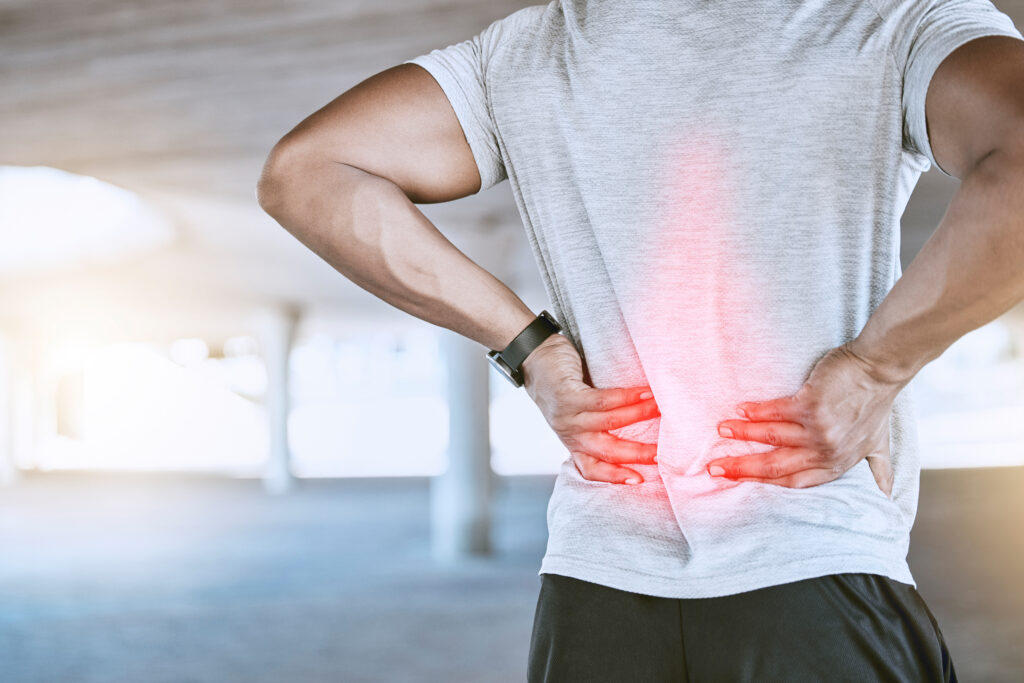When it comes to managing lower back pain, I understand that the array of treatment options can be quite overwhelming. You may have heard about various methods, including physical therapy, medications, alternative therapies, and lifestyle adjustments. Each of these approaches has its unique benefits, but the key to finding what works best for you lies in understanding how they can complement one another.
As a chiropractor, I want to emphasize the importance of a holistic approach to healing. Chiropractic care focuses on the alignment of the spine and the overall health of your musculoskeletal system. By addressing misalignments, we can help alleviate pain, improve mobility, and promote natural healing.
In addition to spinal adjustments, I often recommend incorporating exercises, stretches, and lifestyle changes tailored to your specific needs. This comprehensive strategy not only targets your lower back pain but also enhances your overall well-being.
As you explore these treatment options, I encourage you to keep an open mind. You may find that a combination of chiropractic care and other modalities can lead to surprising improvements in your recovery journey. My goal is to empower you with the knowledge and support you need to reclaim your health and enjoy a pain-free life.
Understanding Lower Back Pain
Lower back pain is a common issue that many people face at some point in their lives, and it can arise from a variety of causes such as injuries, poor posture, or underlying medical conditions. As a chiropractor, I want to emphasize that understanding the nature of your lower back pain is crucial to finding effective, natural treatment solutions.
There are two primary types of lower back pain: acute and chronic. Acute pain often comes on suddenly and may last from a few days to a few weeks, typically linked to specific activities or injuries. Chronic pain, however, lasts for three months or longer and can stem from ongoing issues like herniated discs or degenerative disc disease. Identifying the type of pain you're experiencing can help guide your journey toward relief.
It's also important to consider how your lifestyle impacts your lower back health. Sedentary habits, such as prolonged sitting, can weaken your core muscles, leading to discomfort. On the flip side, overexertion during physical activities can place undue strain on your back.
I encourage you to pay attention to your posture—whether you're sitting, standing, or lifting—because poor alignment can significantly contribute to pain.
Additionally, underlying medical conditions such as arthritis or sciatica might be factors in your discomfort. This is where chiropractic care shines, as we focus on holistic approaches that address these issues naturally.
I recommend consulting with a healthcare professional, like myself, for a proper diagnosis and personalized treatment plan. By understanding the factors contributing to your lower back pain, you'll be better equipped to make informed decisions about your health and embrace a path toward healing.
Physical Therapy Techniques
As a local chiropractor, I want to help you understand how certain physical therapy techniques can significantly alleviate lower back pain.
Incorporating stretching exercises and core strengthening into your daily routine can provide remarkable benefits. These methods not only enhance your flexibility but also create the vital support system your back requires.
Stretching Exercises Benefits
As a local chiropractor, I want to emphasize the importance of stretching exercises in alleviating lower back pain and enhancing your overall mobility. When you make stretching a part of your daily routine, you're not just improving your flexibility; you're also reducing muscle tension, which can significantly ease discomfort and stiffness. This newfound freedom of movement can greatly enhance your daily activities.
Regular stretching is particularly beneficial for lengthening tight muscles that often contribute to lower back pain. For example, focusing on stretches for your hamstrings and hip flexors can help relieve pressure on your lower back, ultimately leading to a reduction in pain. Moreover, stretching increases blood flow to the affected areas, which aids in recovery and helps reduce inflammation.
You may also notice that stretching can improve your posture—an essential factor in maintaining a healthy spine. By paying attention to proper alignment during your stretches, you're reinforcing positive habits that can prevent future pain from developing.
In addition to the physical benefits, stretching acts as an excellent stress reliever. Lower back pain can sometimes be linked to psychological stress, and taking the time to stretch can help calm your mind, leading to an overall sense of well-being.
I encourage you to incorporate a variety of stretches into your routine to support the health of your lower back. Consistency is crucial, so make a commitment to stretch regularly—your body will thank you for it!
Strengthening Core Muscles
As a local chiropractor, I want to emphasize the importance of a strong core as a foundational element for maintaining a healthy back. Strengthening your core muscles isn't just about aesthetics; it's essential for alleviating lower back pain and preventing future injuries. A robust core provides a stable support system for your spine, which helps to reduce strain and promote better posture.
Incorporating core-strengthening exercises into your daily routine can greatly enhance your overall strength and flexibility. This is vital for improving your control over movements and minimizing discomfort. I recommend starting with exercises such as planks, bridges, and abdominal crunches. These movements effectively target not only your abdominal muscles but also engage the lower back and pelvic area, ensuring a balanced approach to core stability.
As you embark on this journey, it's crucial to focus on maintaining proper form during these exercises. This will maximize the benefits and help prevent further injury. If you're new to exercise or unsure about the techniques, I strongly encourage you to consider working with a physical therapist. They can create a personalized program tailored to your specific needs and guide you through the correct methods, ensuring you gain the most from your efforts.
Medications and Pain Relief
As a local chiropractor, I often see patients seeking quick relief from lower back pain. While medications can provide temporary comfort, I want to emphasize the importance of exploring natural healing methods that can address the root causes of pain rather than just masking the symptoms.
Many people reach for over-the-counter (OTC) medications like ibuprofen or naproxen to alleviate discomfort. These nonsteroidal anti-inflammatory drugs (NSAIDs) may help reduce inflammation and provide some relief, but they don't address the underlying issues that could be contributing to your pain. It's crucial to consider a holistic approach to your health.
If your pain is more severe, you might hear about stronger medications like opioids from your doctor. While these can offer short-term relief, they carry a risk of dependency and are generally not advisable for long-term use. Instead of relying on medications, I encourage you to have an open discussion with your healthcare provider about safer, natural alternatives and strategies for pain management.
Muscle relaxants can also be prescribed for muscle spasms, but they often come with side effects such as drowsiness, which can affect your daily activities. Instead, chiropractic care focuses on improving spinal alignment and function, which can help alleviate muscle tension and improve mobility without the side effects associated with medications.
In addition to chiropractic adjustments, I recommend considering topical pain relievers like creams containing natural ingredients, which can be applied directly to the skin for localized relief. These alternatives can often provide comfort without the systemic side effects of oral medications.
Ultimately, I urge you to consult with a healthcare provider who understands the benefits of chiropractic care and natural healing methods. Together, we can develop a comprehensive plan that balances effective pain relief with long-term safety and wellness.
Alternative Therapies
As a local chiropractor, I want to share some insights about managing lower back pain through alternative therapies, particularly chiropractic adjustments.
Many people may not be familiar with how chiropractic care can play a vital role in alleviating pain and enhancing overall well-being.
Chiropractic adjustments are designed not only to relieve discomfort but also to promote proper spinal alignment and function.
This holistic approach can complement traditional treatments and help you achieve better health outcomes.
If you're struggling with lower back pain, I encourage you to explore the benefits of chiropractic care as an effective option for your healing journey.
Let's work together to find a solution that works for you!
Acupuncture for Pain Relief
As a local chiropractor, I want to share with you the benefits of acupuncture as a natural and holistic approach to relieving lower back pain. This ancient practice has gained recognition for its ability to address not only physical discomfort but also emotional well-being, making it a valuable option for many individuals seeking relief.
Acupuncture involves the insertion of thin needles into specific points on the body, which helps stimulate energy flow and promotes the body's natural healing processes. Many of my patients have reported significant reductions in pain, improved mobility, and a boost in overall mood after incorporating regular acupuncture sessions into their treatment plans.
If you're considering acupuncture, it's essential to consult with a qualified practitioner who can assess your unique condition and tailor the treatment to meet your specific needs. Some patients experience immediate relief after just a few sessions, while others may find it takes a few weeks to see more substantial improvements.
One of the standout features of acupuncture is its minimal side effects when compared to traditional pain medications. You can feel confident knowing that you won't be at risk for addiction or adverse reactions, which can often accompany pharmaceuticals.
Moreover, acupuncture can be easily integrated with other treatments I provide, such as chiropractic adjustments or physical therapy, to enhance your overall results.
If you're dealing with lower back pain, I encourage you to explore acupuncture as a complementary option in your pain management strategy. While it may not be the perfect fit for everyone, many of my patients find it to be an effective tool on their journey to better health and wellness.
Chiropractic Adjustments Benefits
As a local chiropractor, I want to take a moment to share with you the significant benefits of chiropractic adjustments, especially for those struggling with lower back pain. Many people are unaware of how chiropractic care can positively impact their overall well-being, so let me explain.
When you come to my practice, the first step is a thorough assessment of your spine. I look for any misalignments that may be contributing to your discomfort. Through targeted adjustments, I work to restore proper alignment, which can alleviate pain and improve your mobility.
One of the most appealing aspects of chiropractic care is that it's a non-invasive approach. Unlike medications that can sometimes lead to dependency or unwanted side effects, chiropractic adjustments harness your body's natural healing abilities. Many of my patients report feeling immediate relief after their adjustments, which can significantly enhance their day-to-day functioning and quality of life.
Moreover, I encourage regular visits to help prevent future episodes of lower back pain. By maintaining proper spinal alignment, we can reduce the strain on your muscles and ligaments. This proactive approach not only helps you maintain better posture but also minimizes wear on your joints over time.
Chiropractic care isn't just about adjustments; it emphasizes a holistic approach to health. I often recommend lifestyle changes, exercises, or stretches that can complement your treatment plan. This empowers you to take control of your health journey, leading to lasting wellness.
Lifestyle Modifications
As a local chiropractor, I want to share some simple lifestyle modifications that can significantly alleviate lower back pain and enhance your overall health.
One of the first steps you can take is to focus on your posture. When sitting, ensure that your back is straight and your feet are flat on the ground. If you spend a lot of time at a desk, it might be beneficial to invest in a chair that provides proper lumbar support. This small adjustment can help prevent unnecessary strain on your lower back.
Incorporating regular physical activity into your daily routine is vital. Aim for at least 30 minutes of moderate exercise on most days. Activities such as walking, swimming, or cycling can help strengthen your back muscles and improve flexibility.
Additionally, a strong core is essential, as it plays a crucial role in supporting your spine.
It's also important to consider your sleeping position. If you frequently wake up with back pain, try sleeping on your side with a pillow between your knees or on your back with a pillow under your knees. These positions can help maintain the natural curvature of your spine, promoting better alignment and comfort.
Be mindful of your weight as well. Carrying excess weight, particularly around your abdomen, can increase strain on your back. By adopting a balanced diet and managing your weight, you can relieve some of that pressure on your spine.
Lastly, pay attention to how you lift objects. Always bend at your knees rather than at your waist and keep the object close to your body.
Heat and Cold Therapy
As a local chiropractor, I want to share some valuable insights on how heat and cold therapy can be a game-changer in managing lower back pain. These natural methods aren't only effective but also easy to incorporate into your daily routine to help alleviate discomfort and support healing.
When you're experiencing muscle strains or spasms, heat therapy is your best friend. Applying a warm compress, using a heating pad, or taking a warm bath can significantly increase blood flow to the affected area. This warmth helps to relax tight muscles and ease stiffness, making it particularly beneficial for those dealing with chronic pain or tension.
Conversely, cold therapy is essential when it comes to addressing inflammation and swelling. Using ice packs or cold compresses can numb the area, reducing pain and slowing blood flow to the injury site. This approach is especially helpful during the first 48 hours after an injury when swelling tends to be at its peak. Just remember to wrap your ice packs in a cloth to protect your skin from frostbite.
It's important to know how to effectively alternate between heat and cold therapy based on your symptoms. For acute pain and inflammation, start with cold therapy. Once the swelling begins to subside, transitioning to heat therapy can aid in muscle relaxation. Aim to apply each treatment for about 15-20 minutes at a time.
Pay attention to how your body responds—if one method feels more beneficial, feel free to stick with what provides relief.
While heat and cold therapy can offer considerable relief, they work best when combined with other treatments, such as chiropractic adjustments, physical therapy, or exercise. If your pain persists or worsens, I encourage you to consult with a healthcare professional for a comprehensive approach to your care.
Injections and Surgical Options
When conservative treatments, such as heat and cold therapy, fall short in alleviating lower back pain, it may be time to explore other options, including injections and surgery. However, before diving into these more invasive methods, it's important to understand the benefits of chiropractic care and natural healing.
As a chiropractor, I focus on addressing the root causes of your discomfort through non-invasive techniques. Chiropractic adjustments can help realign your spine, improve mobility, and reduce pain naturally, often providing relief without the need for medication or surgery. Many patients find that regular chiropractic care helps them manage their symptoms effectively and can even prevent future episodes of pain.
If conservative approaches, including chiropractic adjustments, still don't bring you the relief you seek, injections might be considered. These often involve corticosteroids or other medications designed to reduce inflammation and alleviate pain in the affected areas. Epidural steroid injections, for instance, deliver medication directly around the spinal cord, which may provide temporary relief and enable you to engage more effectively in physical therapy or rehabilitation.
Should injections prove insufficient, surgical options such as discectomy or spinal fusion may come into play. These procedures aim to remove herniated discs or stabilize vertebrae, potentially providing significant pain relief. However, it's crucial to have a thorough discussion with your healthcare provider about the risks and benefits of surgery.
Remember, surgery isn't always a guaranteed solution and may involve a longer recovery period. When considering injections or surgery, reflect on your unique situation. Evaluate the severity of your pain, your overall health, and the impact it has on your daily life.
While these options can be effective, they should ideally be considered only after exploring all conservative treatments, including chiropractic care. Always consult with a healthcare professional who understands your specific needs. By educating yourself on all available options, you empower yourself to make informed decisions on your path to relief.
Your journey may be intricate, but with the right support and understanding, you can find a solution that works for you.
Prevention Strategies
As a local chiropractor, I want to share some valuable insights on how to prevent lower back pain from coming back after exploring various treatment options. One of the most effective ways to achieve this is by focusing on core strength. Engaging in exercises that target your abdominal and back muscles can provide the essential support your spine needs. I recommend incorporating exercises such as planks, bridges, and pelvic tilts into your routine for optimal results.
Another crucial strategy is to enhance your posture. Whether you're working at a desk or lifting heavy items, keeping your body aligned properly can significantly reduce the strain on your lower back. It's important to ensure that your workstation is ergonomically designed, and always remember to bend at your knees when picking up heavier loads.
Staying physically active is essential for your overall health and particularly beneficial for your back. Consistent physical activity not only strengthens your muscles but also increases your flexibility. Aim for at least 30 minutes of moderate exercise most days of the week. Activities such as walking, swimming, or yoga can be especially advantageous for preventing back pain.
Additionally, be mindful of your body mechanics. When lifting heavy objects, utilize your legs for strength rather than your back. Keep the load close to your body and avoid twisting your torso while lifting to prevent injury.
Lastly, always listen to your body's signals. If you experience any pain or discomfort, it's important to take a break and avoid pushing through it. Rest and recovery are just as vital as exercise in maintaining your health.
Conclusion
As a local chiropractor, I want to share some effective ways to manage lower back pain using a holistic approach. It's essential to understand that healing your back involves more than just treating symptoms; it requires a combination of physical therapy, appropriate medication, and meaningful lifestyle changes.
One of the primary methods I recommend is engaging in core strengthening exercises, which can help support your spine and alleviate pain. Additionally, we can explore various pain relief options, including chiropractic adjustments, which have been shown to provide significant relief for many patients.
It's also worth considering alternative therapies, such as acupuncture or massage, which can complement your chiropractic care and enhance your overall recovery. Remember, maintaining good posture and staying active are crucial components in preventing future back issues.
With the right strategies in place, including regular chiropractic visits, you can achieve a healthier back and improve your overall well-being. My goal is to empower you with knowledge and natural healing techniques that can lead to lasting relief. Let's work together towards a pain-free life!



